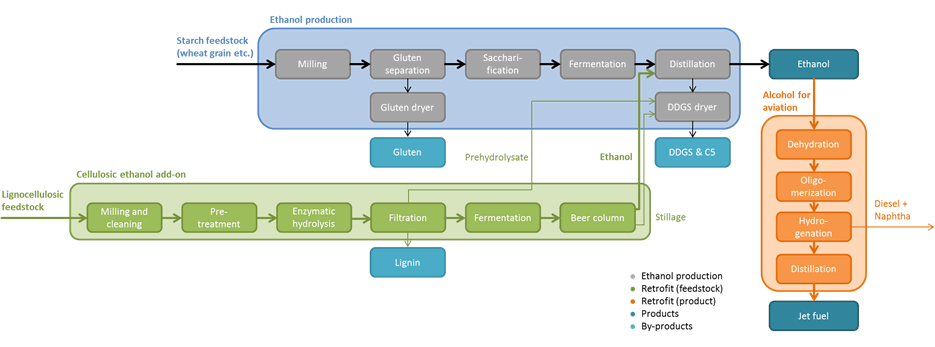1st generation biofuels
The main reason for retrofitting a 1st generation biofuel plant is that it can become a 2nd generation biofuel plant, according to the definition as laid out in RED II.
Biodiesel: For biodiesel production, oil is transesterified with addition of methanol and a catalyst and subsequently purified Biodiesel is washed and/or distilled for the final product. Methanol can be recovered, and glycerine is a by-product.
One retrofit option is to include a waste stream as feedstock, such as used cooking oil or animal fat. Using this kind of feedstock requires a pre-treatment and a prior acid esterification step.
Another option is to further process the glycerine to biomethanol, by integration of a glycerine-to-biomethanol unit in an existing biodiesel plant. The produced methanol can again be used for biodiesel production.
Source: BIOFIT Project
View at larger size >>
Ethanol: In order to produce ethanol, starch feedstock is milled and gluten is separated. The starch is saccharified to sugars, which are fermented to ethanol. To obtain pure ethanol, distillation is required. The bottom fraction of the distillation can be dried to dried distillers grain with solubles (DDGS) and used as high protein feed.
Several options for retrofits are possible in an ethanol plant. Ethanol can be further processes to jet fuel, by dehydration, oligomerization, hydrogenation and a subsequent distillation.
Another option is adding lignocellulosic feedstocks, e.g. agricultural residues such as straw or corn cobs.
Source: BIOFIT Project
View at larger size >>


